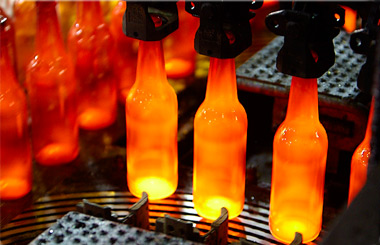PROJECT INFO
Project start: 2016
Project Completion: 2016
CLIENT INFO
Client: Gulf Glass Factory
SERVICES PROVIDED
Environmental
PROJECT DETAILS
The global market for glass packaging is thriving on the back of increasing consumer demand for pure, green, and sustainable food and beverage packaging. Due to the fact that container glass are chemically inert and pure, and thus safer to be used, their popularity and demand is notably high among consumers. Furthermore, the perception of glass containers as having a high quality or premium image compared to plastic and metal containers is also facilitating its growth. Unlike plastic, cans, and multi-layered cartons, glass containers do not need a petroleum-based plastic layer or other chemical additive to preserve the taste of foods and beverages, avoid corrosion or decrease gas permeability.
In addition to the above benefits of glass, factors such as increasing demand is driving the growth of the glass container industry. In line with the above mentioned benefits of Glass and the rising demand of container glass for packaging of food and beverage industry within Qatar, Gulf Glass Factory management is planning to establish its container glass manufacturing facility.
The proposed Gulf Glass Factory(GGF) would include manufacturing of glass containers for packaging of food and beverages items. The Glass Manufacturing furnace would have the capacity of 170 MT/day. Container glass is made from a basic soda-lime formulation and is melted in a natural gas fired furnace. The molten glass is then taken formed into the products by automated individual section (IS) machines. Where molten glass is moulded in to finished products Glass containers.
The GGF management had retained the services of Qatar Design Consortium (QDC) to carry out the baseline environmental study and prepare an Environmental Impact Assessment (EIA) study report.
In order to relate the existing environment with the proposed project activity, it was imperative to carry out detail evaluation of the baseline environmental characteristics including: Ambient air Quality, Noise Level, Soil Quality, Groundwater quality, and Odour. Applicable regulatory requirements were reviewed and compiled before commencing a structured and detailed baseline studies and a refined modelling analysis has been conducted using AERMOD.
